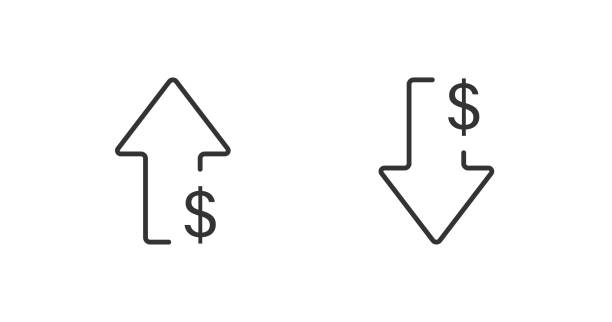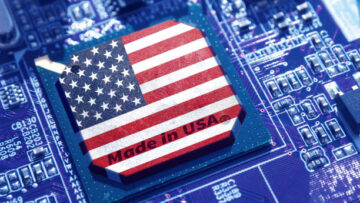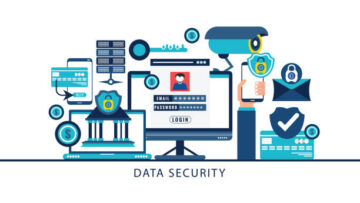You needed deep pockets if you wanted in on the IBM PC revolution. In 1982, at the beginning of PCMag, an IBM PC with a 10MB add-on hard drive and Multi-Tool Word, the first version of Microsoft Word, would have cost you over $15,000 inflation-adjusted. Businesses were able to recoup the cost through increased productivity. Home computer enthusiasts, however, stuck to cheaper models such as the $1.666 (inflation-adjusted) Commodore 64.
Everything has changed in the last 40 years. In the 1980s and 1990s, computer and printer prices dropped dramatically. PC storage has continued to become cheaper and faster each year. Some of the Technology we tracked hasn’t gotten cheaper, and in some cases, prices have been increasing for years. Check out what’s cheaper, what’s more expensive, and what’s flat-lined in price.
Hard Drives are less expensive
Hard drives have undergone the most dramatic transformation. In our first year, a 10MB rotating hard drive cost us $2,495, $7,210.55 adjusted for inflation. You can get a spinning hard drive with 4TB for only $70. This is 40,000 times more storage at a hundredth of the cost. Storage is getting cheaper and faster!
The ad shown above is from our November 1982 edition. It shows one of the original hard drives that cost $7,210, adjusted for inflation. Corona was an early manufacturer of hard disks.
John McCallum, a retired CS professor, collected prices from PCMag over the years to demonstrate how drive prices have been falling. ‘s chart (Opens in a New Window) has a logarithmic scale. Storage costs are thousands less than they were in the 1980s.
Less Expensive PCs
Over the next two decades, PCs got cheaper and cheaper until they reached a plateau in the mid-2000s. IBM’s PC 5150 was launched at $2,880, which is $8,352 today. The PC AT from 1987, the most popular model, cost $2295, or $5622.75.
Our then-editor-in-chief, Bill Machrone, coined Machrone’s Law, saying, “the computer you want always costs $5,000.” You can get a computer for $5,000, but most people spend much less.
Prices of desktop PCs continued to drop throughout the 1990s. They finally settled at $450 in 2004 and stayed there. Since then, a good entry-level desktop has cost between $400 and $500.
Microsoft Word is less expensive
Microsoft Word illustrates how the price of application software has dropped over time. When Word was first introduced in 1983, it cost more than $1100 (inflation-adjusted). The cost of word processing packages was very variable at the time. Word for the IBM PC costs $395, while Paperclip, which I used to write my school reports, only costs $60.
PCMag’s word-processor stories were a mainstay of the 1980s. At its peak, the word-processing market offered dozens of choices. These ranged from $50 home products to expensive office suites. In the 1990 issue, eight high-end, powerful packages were featured; today, it’s mainly Word.
Word was a standalone expensive program until Office 95 came out, which included Word, Excel, and Powerpoint in a package for $499. Office 2003 Student and Teachers, available for anyone to use for noncommercial purposes, brought the real Word revolution. The price of the three core Office apps dropped to $149. It’s been that way for the last 19 years.
Laser Printers are less expensive
Laser printers are another example of an expensive luxury that is now almost free. In 1984, the original Hewlett-Packard LaserJet cost $3,495 – about $9,366 today. The price of entry-level lasers dropped steadily throughout the 1980s. In 1991, we reviewed a model that cost $1,245, and in 1993 — wham! — a model for $599. PCMag’s monochrome lasers cost $200 in 2002. You can get one for as little as $99 or even less.
Above is our review of Hewlett-Packard LaserJet 1, an absolute revolution in desktop printers.
The same: Games
Prices don’t always go down. Games, for example, have only become cheaper at the inflation rate. Our first issue had a really poor take(Opens in new window) about how “games – particularly the arcade type – will be the least wanted programs for the machine.”
In 1993, DOS gaming reached its peak. Old 8-bit platforms had died or were dying. SVGA graphics transformed PC games. We usually have a feature like the one shown above in the back of the book, highlighting some games.
In the history of PCMag, a good gaming experience has ranged from $40 to $60, depending on the title. The price of the seminal Zork I adventure game in 1982 (Opens in a New Window) was $39.95. Today that would be $116.39. Our 1993 roundup of strategy games featured games priced between $40 and $70. The latest version of Assassin’s Creed costs what? $60.
AAA games are not commoditized or automated. Standardized engines and development platforms mean that coders no longer have to reinvent the wheel as they used to in the 1980s and 1990s. However, AAA games still have the same huge budgets and staff as blockbuster films.
Streaming Services are more expensive
In 2001, Netflix began sending DVDs by mail at a monthly price of $19.99. This price declined slowly until 2011, when the company separated its DVD and streaming operations, offering its first streaming package at $7.99/month. Prices have risen since then.
Netflix began producing its series in 2013 with House of Cards and is now known for its original content rather than its old movie library. Netflix’s premium plan is now $19.99 per month. More importantly, many people feel that they must subscribe to several streaming services.
In the above column, we mention Netflix or NetFlix for the first time. “You can rent three DVDs each at a given time.”
Flagship smartphones are more expensive
Smartphones are the real culprits. Even with inflation, flagship phones have become increasingly expensive. This could be because they have absorbed many other products, such as your camera, MP3 player, and calculator.
PCMag began its coverage with the AT&T EO, a groundbreaking device that cost $1,999 in 1993–or $3,858 today when adjusted for inflation. The prices then started to drop. In 2000, the Qualcomm PdQ cost $799. In 2003, Treo 300 was $400. And in 2005, Motorola Q was $420. Things changed. After the iPhone was released, the flagship smartphone price ranged between $600 and $700, adjusted for inflation.




